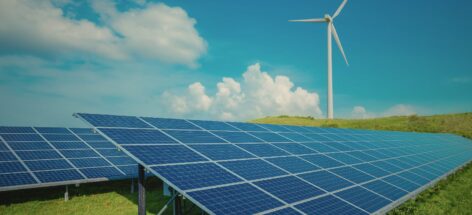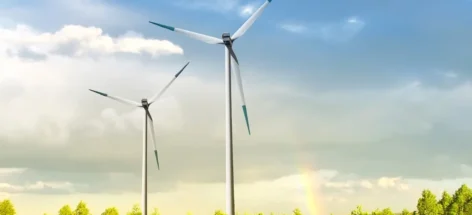14. November 2025
Reading Time: 5
Min.
news
What is actually subject to real estate tax in PV and BESS projects, how to calculate 2%, and how to avoid disputes with the municipality.
Where the “2025 revolution” came from
The response to years of disputes over what constitutes a “structure” (budowla) for real estate tax purposes was the judgment of the Constitutional Tribunal of 4 July 2023 (SK 14/21). The Tribunal questioned the previous method of defining a structure and required the legislator to fix the regulations. As a result, as of 1 January 2025, an amended Local Taxes and Fees Act (u.p.o.l.) came into force, introducing new autonomous definitions and an organized catalogue of objects. This marks a turning point for the energy sector, as photovoltaic power plants and energy storage facilities were named explicitly in the law for the first time.
What is subject to taxation – the fundamental rule
The Act still provides that real estate tax covers land, buildings or parts thereof, and structures or parts thereof used in business activity. In the context of PV/BESS, the third category is crucial – structures in “business activity.” If an installation is not connected to business activity (e.g., a household prosumer), it generally does not fall under this regime.
PV and BESS under the new definition of “structure”
The new wording of Article 1a of u.p.o.l. explicitly states that a structure includes, among others, a photovoltaic power plant and an energy storage facility, “to the extent that they are not buildings – only with respect to their structural (construction) parts.” This sentence determines the logic of taxation: the tax is not levied on the technical equipment that forms part of the PV or BESS installation (PV modules, batteries, inverters, BMS), but on the construction elements serving to support and permanently integrate the installation with the land (foundations, support structures, foundations for equipment, mounting elements).
And what if the “storage unit” is a container?
If the container meets the definition of a building (has foundations and a roof, is permanently attached to the ground, has partitions), it is taxed as a building (i.e., based on m² of usable floor area). If not, it remains classified as a structure and only its construction part (foundation/base, supporting construction) is taxed. The final qualification depends on the facts and technical documentation of the specific project.
Rooftop vs. ground-mounted – different effects
In ground-mounted farms, foundations and support structures (construction parts) will typically be taxed, while modules, inverters, cabling, and transformers remain outside the tax base. Conversely, rooftop PV installations usually do not change the taxation of the building itself – tax is still calculated from the building’s sqm.; taxation as a structure would only apply to new construction elements created during the works (which is rarer in practice). This is why for rooftop projects it is crucial to document whether – and which – construction elements were actually created.
How to calculate the PV/BESS tax: 2% of the value of “construction parts”
For structures, the tax is 2% of their value. As a rule, this value is the value adopted for amortization as of 1 January of the given year (if unavailable – the market value determined on the relevant date). The 2% mechanism results from Article 5 of u.p.o.l., which refers to Article 4 rules for determining the tax base. In practice, the key is a reliable allocation in the fixed asset register separating the value of construction parts (taxed) from equipment (not taxed).
Organized catalogue – fewer disputes with municipalities
The amendment introduced a closed list of structures (Appendix 4). This helps resolve “accompanying” elements in PV and BESS investments, such as internal roads, fencing, or container-type facilities – and prevents the need to rely on Construction Law. For the energy sector, it is a strong argument to design and contract CAPEX from the start with a clear division between construction and technical components.
Deadlines for filing declarations in 2025 and subsequent years
Exceptionally for 2025, the deadline for filing the DN-1 declaration was extended to 31 March 2025, provided that a notification of using this right is submitted by 31 January and advance payments are made based on the 2024 average. This regulation was intended to give taxpayers time to analyze and “translate” the new definitions into their declarations. Starting from 2026, the standard statutory deadlines apply to real estate tax declarations.
What to prepare before filing the declaration (project practice)
- Asset map – a list of installation components distinguishing “construction parts” from “equipment.” In PV projects, these will most often be foundations and support structures; in BESS – foundations for containers or battery cabinets and load-bearing structures.
- Values – in the fixed asset register, CAPEX must be divided so that “construction parts” have their own initial value (or, if not available, a market valuation is prepared).
- Technical documentation – acceptance protocols and contract annexes should clearly indicate what is what. This saves extensive correspondence with the municipality later.
- Accompanying objects – roads, fences, yards, connections – check whether and in which category they fall under the statutory catalogue.
Most common mistakes and how to avoid them
Based on my experience, the most common mistakes in calculating real estate tax for PV and BESS projects are:
- Taxing the entire PV/BESS farm – as explained above, this is incorrect. Only the construction parts of the photovoltaic plant/energy storage facility are taxable, not the equipment (panels, batteries, inverters). The literal wording of the law is decisive.
- Failure to allocate values – this leads to disputes over the tax base for the 2% rate. CAPEX should be split during the procurement/commissioning stage, not only at the declaration stage.
- Automatically classifying a container as a building – classification depends on meeting the criteria of a “building” (foundations, roof, permanent connection, partitions). In many BESS projects the container does not meet all requirements and therefore is treated as a structure.
- Ignoring the link to business activity – structures are taxable only when connected to business activity. This is important in hybrid or shared projects.
Summary
As of early 2025, the taxation of PV and BESS projects has become more predictable: only the construction parts of these installations are subject to real estate tax, while technical equipment – panels, batteries, inverters, control systems – remains outside the tax base. The key to correct calculation is a proper division of CAPEX and asset registry between construction and technical elements, proper classification of accompanying objects, and, in the case of container-based solutions, the correct distinction between a “building” and a “structure.” Well-prepared technical documentation significantly reduces the risk of disputes with the municipality when filing the DN-1 declaration.





